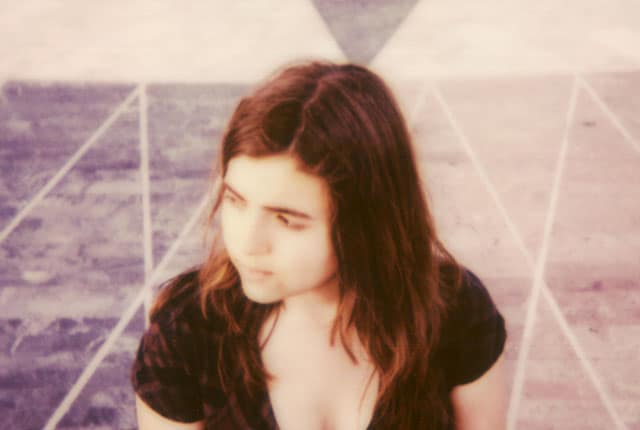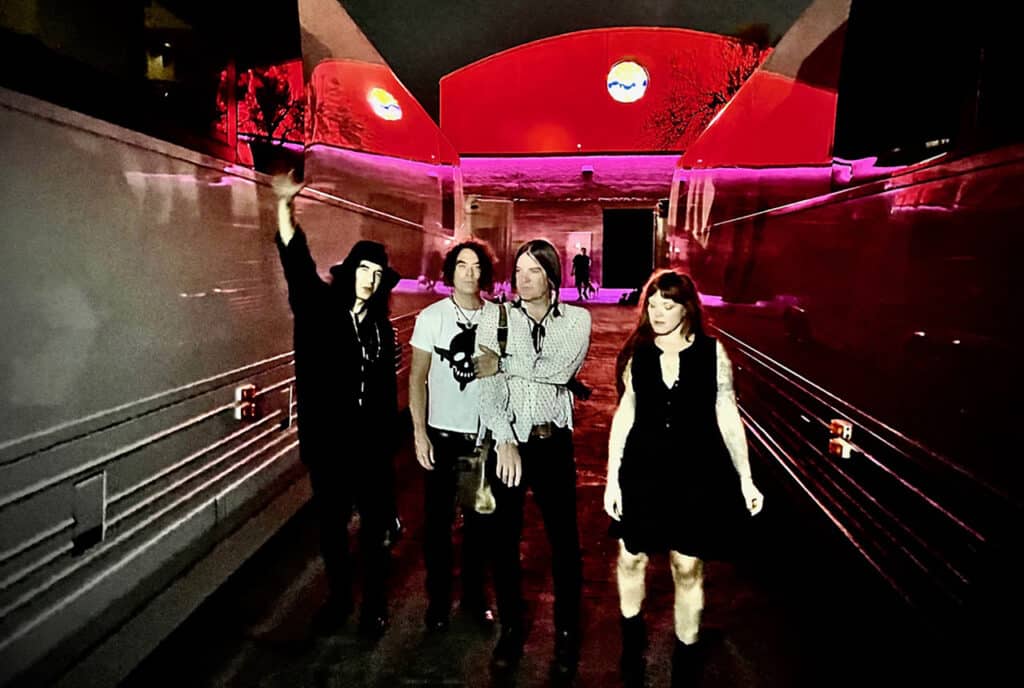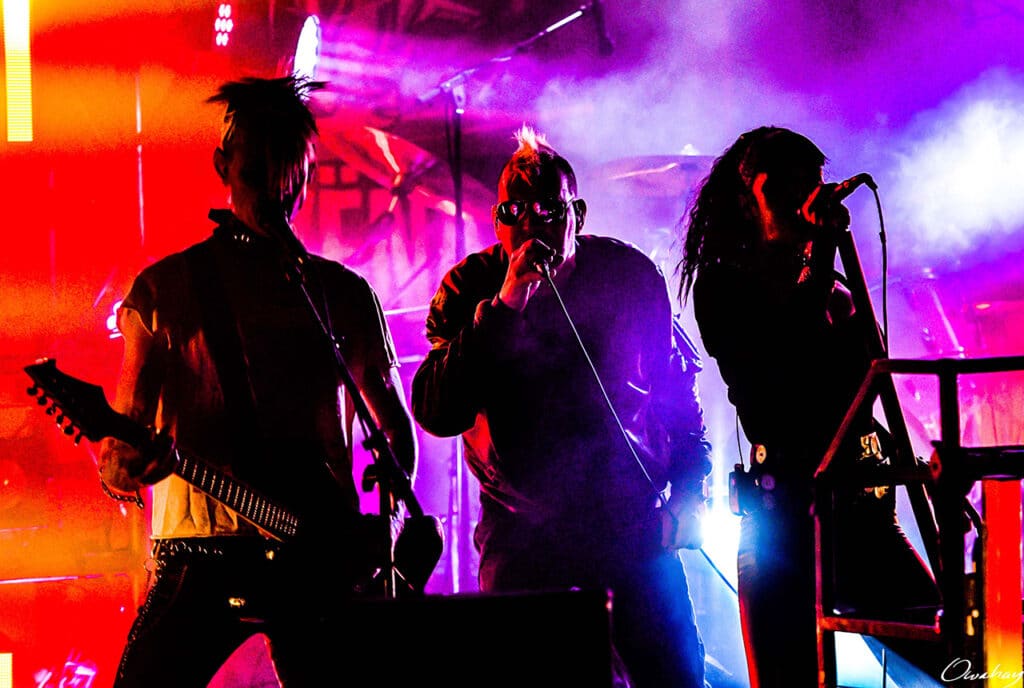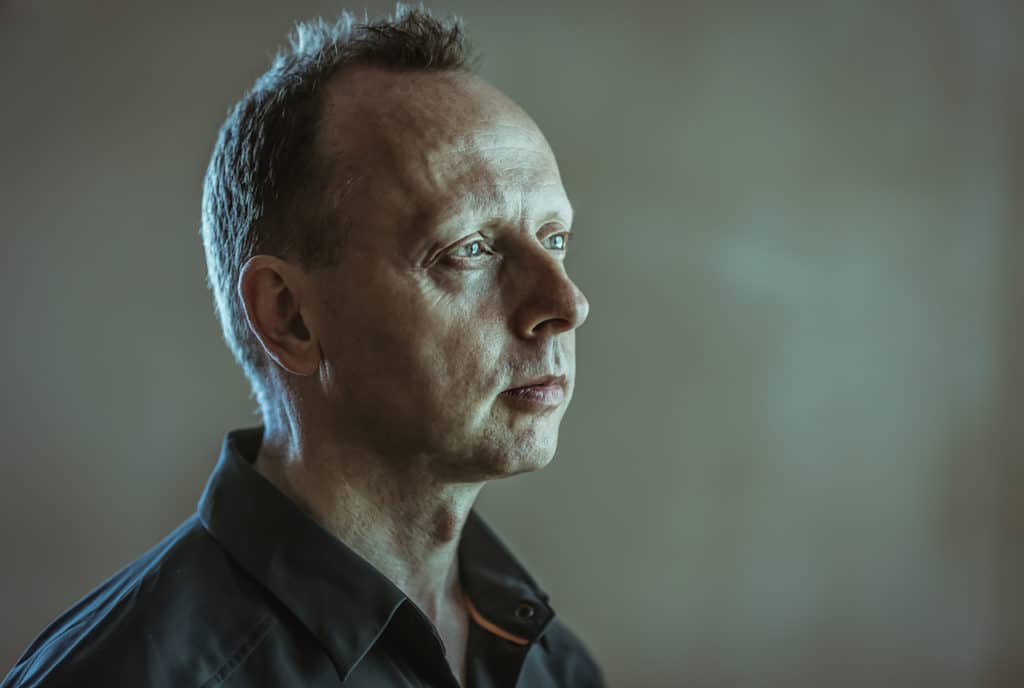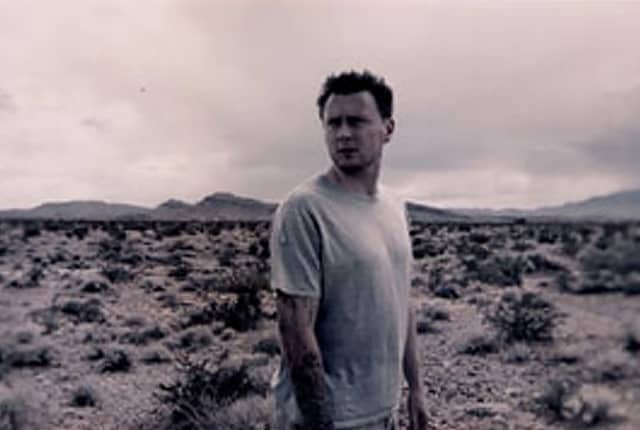Brazilian-born singer/musician Dom La Nena has always split her time between continents, so it comes as no surprise that her work has a truly global feel to it. Using the cello as her primary instrument, Dom creates unique, yet instantly welcoming music that blends a variety of Latin American and European influences with an understated yet undeniable catchiness. Dom recently released her second album “Soyo,” a work that brings an increased emphasis on rhythmic elements to her music.
Full name Dominique Pinto, she hails from Porto Alegre and spent part of her childhood in Paris. Dom began studying cello and piano at a young age, and at age 13 moved to Buenos Aires to train with acclaimed American cellist Christine Walevska. It was during that time her older peers gave her the nickname “La Nena” (“Little One”). Moving back to Paris at 18, Dom worked with a variety of artists and embarked on an extensive international tour accompanying British singer/actress Jane Birkin.
The first Dom La Nena album, “Ela” (2013), featured delicate, somewhat minimalist music arrangements and whisper-like vocals. It was initially a challenge to make; while Dom had experience working in a recording studio with other artists she “did not feel comfortable with the vibes of a regular studio” for her solo work. She overcame this when she was invited to use the home studio of singer/songwriter Piers Faccini, who ended up co-producing the album.
For “Soyo,” Dom was again looking for a co-producer who is also a singer/songwriter, and therefore able to have input on the composition. Through mutual friends, she connected with Marcelo Camelo, formerly of highly acclaimed Brazilian band Los Hermanos.
The following is a phone interview conducted with Dom in late March, just before she kicked off her US tour in support of “Soyo.”
Did the extensive touring you did in support of ‘Ela’ have any impact on ‘Soyo,’ the new album?
I did the songs during the last three years, so of course touring has had an influence. I talk about movement, about traveling, about discovering new places…a lot of stuff that was part of the touring process. I talk about life in a global way.
Did getting out and playing the music live influence your new work, in terms of thinking about live performance when writing?
Yes. There are songs that I specifically wrote for the stage. One example is the first song on the album, ‘La Nena Soy Yo.’ I wanted to make people sing the chorus with me. It says ‘Le Nena Soy Yo’ and I wanted the people to say `I am La Nena.’ So that song was really written for the stage, for the audience. Also, ‘Golondrina’ was another song that I really wrote for the stage.
How did you come to work with Marcelo Camelo on this album, and what was the experience like?
I’d been a big fan of Marcello for years. He’s one of the references for my generation in Brazil; he had one of the bigger rock bands in Brazil called Los Hermanos and then he had his solo work that is really beautiful. I’ve listened to him since I was around 15 years old. Of course, I always wanted to do something with him, but it was kind of a dream. But then I did ‘Ela’ with Piers and really enjoyed co-producing the album with someone who wasn’t just a producer but was also a songwriter, a singer. It’s a different approach to the songs. When I was working on ‘Soyo,’ I again wanted to co-produce the album with someone who is a singer and songwriter, not only a producer. I wanted someone who also worked on the composition. What I wanted for the songs was something shinier, more rhythmical. It was evident that Marcello would be the perfect person. We had some friends in common who put us in touch, and we met to see how we matched together. Marcello is someone who is extremely generous and when we met it was even more evident it would work well. He immediately accepted and was very excited about it. If we hadn’t done the album together, I think that it would have been a slower process. When I contacted him, I wasn’t thinking of doing the album at that moment, I was just starting to think about it. But he was so excited that it gave me a push.
I learned a lot because I wanted something rhythmical, maybe with less melancholy than ‘Ela.’ For example, for the rhythmical parts, I never really thought about my songs in that way. It was something quite difficult in the beginning. Marcello had a clear vision of how it would work. I started off the songs by myself, but I was afraid that it sounded quite similar to ‘Ela.’ Then when we went into the studio together, for him it was so evident, the rhythmical parts of the songs. With each rhythmical arrangement he did, it was as if he was taking the idea out of my mind. For me, it was immediately evident that it was right, and it felt like it had been in my unconscious and then he brought it to reality.
Did the increased emphasis on rhythmical make you re-evaluate any of the older material, perhaps in terms of live performance?
Of course.There are a bunch of songs that I’ve introduced drums to. It’s something very new, as I didn’t have any percussive instruments before.
Could you describe your approach to live performance? I see that you’re using pedals and loopers on stage.
What I try to do on stage is the same as what I do in the studio. I try to build the songs live, to make the construction of the arrangement. If I’d recorded a lot of cello, I would use my pedals. Usually the basis of the songs are on the cello, and then I do more melodic elements, also with the cello, and I also have an electric guitar, some drums and percussions. I record everything; everything gets looped. I also do vocal loops. On the albums, I always try to play all that I can by myself. I try to do the same on stage. I think it’s very similar to the record, to be just by myself building the songs.
Since you’re not able to bring along all the studio equipment, is it ever a challenge adapting the music for live performance?
Some of the songs are more difficult than others, and sometimes it can be a bit frustrating to not have all the elements that you had on the album, of course. But I think it’s another approach. So much of it is the energy that you put into it, more than the arrangements themselves. So there are songs that are more challenging than other songs. Sometimes it doesn’t work, and you can’t do a song or two, and sometimes it’s just a question of time.
Do you ever find that adapting a song for live performance ends up leading you in a different direction with it?
Yes, for example “Golondrina” is on this album and was also on an EP that I did last year. They have different arrangements. On the EP, it’s only cello and voice, and it was really the same arrangement I do on stage. On the album, it’s more rhythmical, and there are drums. That song, for example, I found a way to do the ‘Soyo’ arrangements on stage. But I’m still between both because I think the other version works really well live too. So I’m doing one show one version, another show the other, and trying to compare and figure out which I feel better about.
You’ve collaborated with different people on your albums so far. Is this something you think you’ll continue to do, working with different people each time?
Doing an album, it’s always challenging not to do the same thing twice. But I would love to do another album with Marcello, and I’d love to do another album with Piers. But let’s see how the next songs turn out.
Do you generally start out with the cello when writing songs?
No, often it depends on what I have in my hands at that moment, sometimes I have a cello, sometimes I’m at a piano. I don’t have a rule or something that I always do the same with the writing and composing process. It’s always different.
You sing in several languages; how do you decide which to use on a particular song?
It comes about naturally. The choice of the language is very unconscious. I don’t really choose ‘ok, let’s do a Portuguese song or let’s do a Spanish song.’ It’s very much around the sound of the words, and the melodies ask for it. It’s something of a mystery. I don’t have a scientific explanation for it. It’s just about sound. Some melodies work better with particular sounds than in Spanish or Portuguese. And sometimes I mix both. Sometimes the chorus is in Portuguese, the verse is in Spanish.
Do you think at all about whether a particular audience will be likely to understand the lyrics?
It’s very surprising, actually. Very often, people don’t understand the lyrics, but they understand the global feeling I’m talking about. This is something that I’m very grateful of. It almost never happens to me to have people say ‘hey, but can you translate the lyrics for me? Can you sing in my language?’ The important thing is to pass the language barrier and just try to express a feeling with only the music. It’s something that you can do. Look at classical music.
How did the “Ela Por Eles” remix album come about?
It was kind of an experiment because it was something I’d never done before. It was a suggestion from my record label and I thought it would be fun to see what people do with my music. It was a curiosity to see how people would approach the songs. Of course, it was very surprising because it was extremely different from my versions. Sometimes I feel closer to remixes, sometimes I feel far, but it’s still interesting because it’s another approach to the same song.
Were there any particular remixes that stand out in your mind, perhaps because they took the music in an unexpected direction?
‘Batuque,’ there is a version from Jeremy Sole and Atropolis. They did a very punch version that is very, very different from what I do, but I like it. I think it’s really interesting, and it was very surprising to me. It was also a good first approach to my songs in a rhythmical way before I worked on ‘Soyo.’
What made you decide to go on tour alone, as opposed to bringing along other musicians?
I wanted to try to do the same process that I did on the record. The record was only Marcello and I. Of course I’d love to have Marcello on tour with me but he has other stuff to do! It’s something that comes naturally to me. I think it’s very interesting, the relationship with the audience when you’re just by yourself on stage. It’s more of a risk. I think that to be alone on stage with my cello and be myself, it’s something kind of more rock and roll than to be with a full band. I think this is an interesting approach, and I want to continue to do it like that.
For more info on Dom La Nena, check out her official website at domlanena.com.
